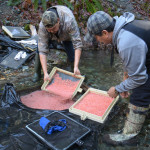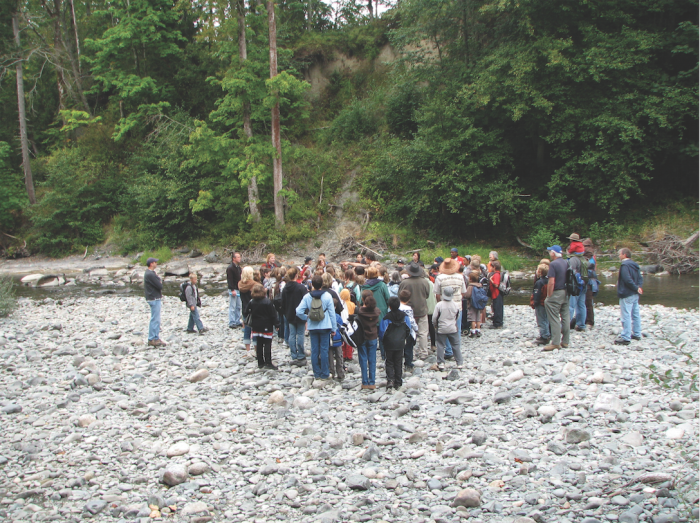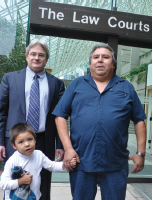Our River, Our Food
by Tricia Thomas
“Halalt will continue to do everything we can to protect our river and the aquifer. We are stewards of the entire watershed. It is our job to protect the fish and habitat from the estuary to the river’s source.” – Halalt Chief James Thomas, November 2012
The fight goes on …
After 12 years of legal battling, questions remain at Halalt First Nation about who owns rights to the water and how to ensure safety of the Chemainus River system.
Three years ago, the Municipality of North Cowichan won a BC court decision allowing it to start pumping water to nearby residential centres in high-water months from the river’s aquifer in Halalt territory. Now, after the driest year on record, the municipality wants year-round access to the aquifer.
While the municipality wants quick solutions to meet provincial funding deadlines, Halalt points out that habitat assessments need to be done over time in order to determine whether the aquifer will be able to meet ever-increasing demands.
The nation also wants to learn about the source of recharging the aquifer. If it is connected to the river, then overuse could devastate a river already heavily impacted by logging, agriculture and other developments.
For 30 years, Chief James Thomas has been concerned about low river levels trapping salmon fry within the river’s channel. “Our fish were stranded or unable to hatch due to low flow in March this year – five months earlier than usual. Extraction of water from the Chemainus River aquifer would be a nail in the coffin for the juvenile salmon in our backyard.”
Additionally, the municipality proposes to release water from the Banon Creek reservoir into the river if the aquifer ever becomes threatened. The North Cowichan website claims that: “temperatures will be improved in Chemainus River by flow release from Holyoak Lake and Banon.” But Halalt says that influx of warmer water will harm the spawning and rearing environment for the five species of salmon inhabiting the river.
 Halalt, Lyackson, Snuneymuxw and Penelakut currently use the Chemainus River side channel for salmon enhancement. Due to higher than normal temperatures in May, there were 25 early-run Chinook instead of the usual 2000 fish, in the past.
Halalt, Lyackson, Snuneymuxw and Penelakut currently use the Chemainus River side channel for salmon enhancement. Due to higher than normal temperatures in May, there were 25 early-run Chinook instead of the usual 2000 fish, in the past.
The previous working relationship between Halalt and the municipality seems to be eroding. In July, the municipality began water testing without consulting Halalt and without notifying the nation of its application to the Environmental Assessment Office for year-around pumping. As drought patterns increase, watersheds throughout Vancouver Island are threatened.
Halalt wants to avoid mistakes that have devastated parts of California through unsustainable groundwater use. It warns of possible land sinking, saltwater intrusion and contamination. Damage to an aquifer is permanent.
It is also asking: How many generations of salmon fail to return to their spawning grounds before they are gone forever?
For more information:
Search salishseasentinel.ca for “salmon starve”
Search for “Chemainus well” at northcowichan.ca





